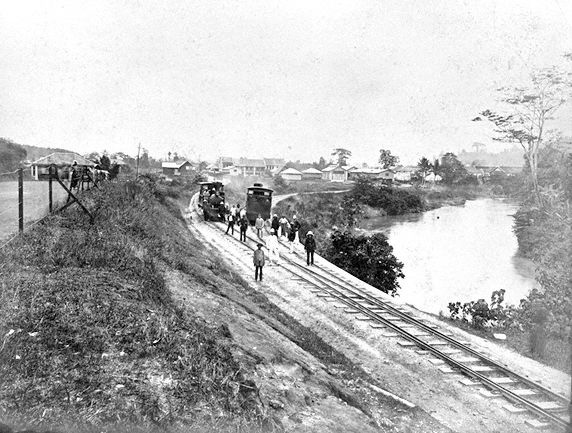
Pictorial History of Railways around Kuala Lumpur
or
Pictorial History of Railways in Selangor
Below: Two A class locomotives at the Kuala Lumpur end of the line, probably around the time of its completion in 1886. The one on the left is on the platform road while the other is facing the goods yard. Compare this picture to the fourth one, taken from almost the same spot less than 4 years later.
1.c1886
2.1886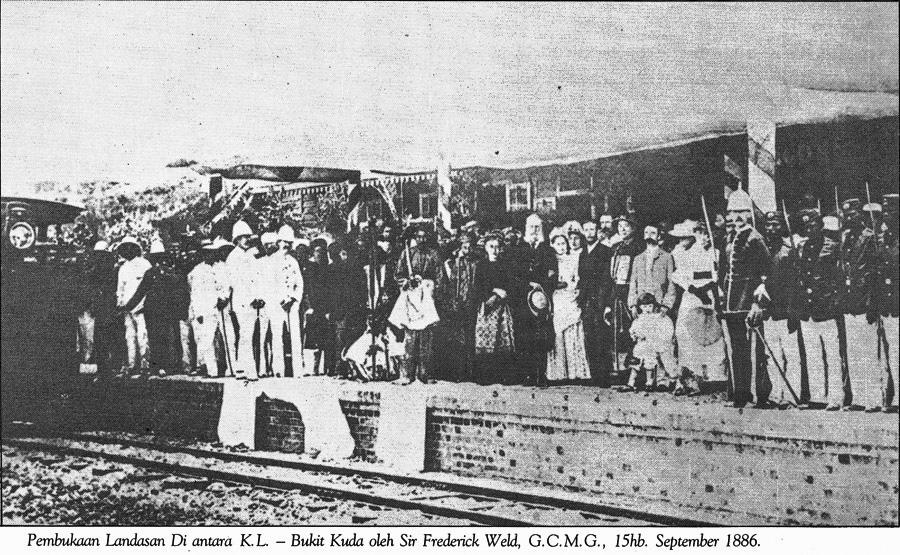
Above: The literal translation is "Opening platform between K. L. - Bukit Kuda by Sir Frederick Weld, G. C. M. G., 15th September 1886". It was reported that the first train was hauled by the locomotive "Lady Clarke", an ex-Indian Railways B class but the locomotive in the picture appears to be an A class. Having now had access to the full reports I can suggest that this is not the actual opening ceremony but a naming ceremony for the locomotive "Lady Weld" at Kuala Lumpur station on 18th September 1886. Following is an extract from the full report which can be read here.
On Saturday morning, Lady Weld christened one of the railway engines after herself, the Governor's party were assembled beneath a sort of small canopy of red and yellow cloth, a bottle of Champagne decorated with white flower was presented to Lady Weld, who handed it to one of the engineers belonging to the railway. The engineer then held the bottle on the line, the locomotive was set in motion and passed over the bottle, crushing the neck of it so that the champagne all flowed out, and in this way the Lady Weld was christened. The Governor, Lady Weld, the Misses Weld and some others were formed in a group near the engine and were photographed.
3.c1889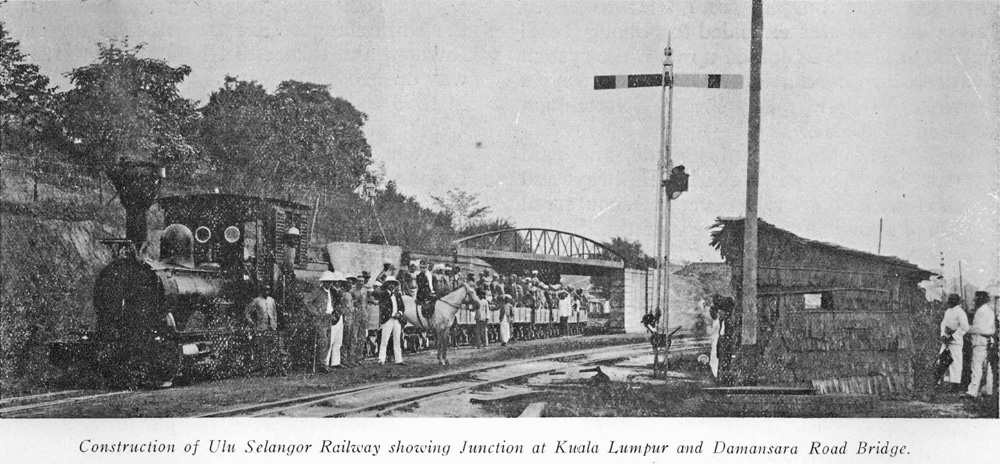
Above: Not sure what the occasion is, the bridge is not yet complete (see picture below) but Lady Clarke appears to be heading a construction train full of passengers on the new line to Batu Junction. The line in the foreground leads into the station and yard (right background) while to the left is the future site of the 1892 station.
Below: The same location seen from the top left corner of the above picture showing the station and yard and with the bridge now appearing to be complete and this picture is dated 1890. Compare it to the first picture above.
4.1890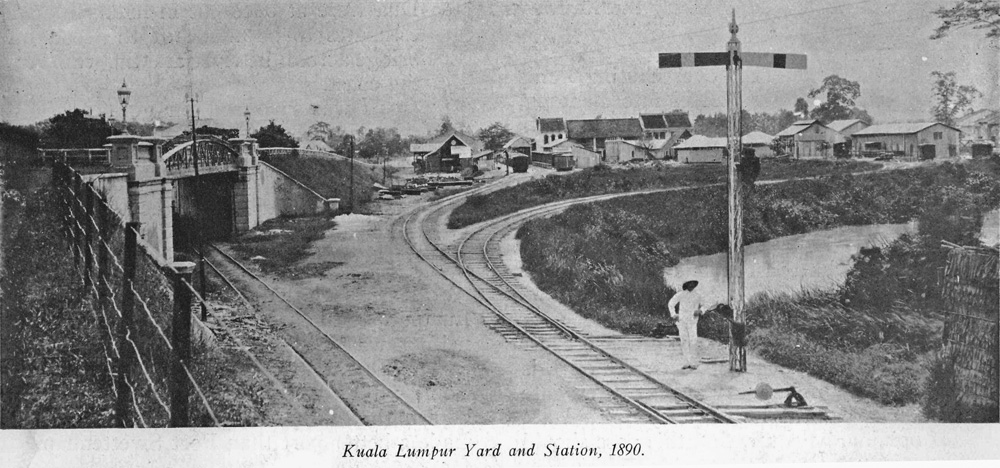
5.1889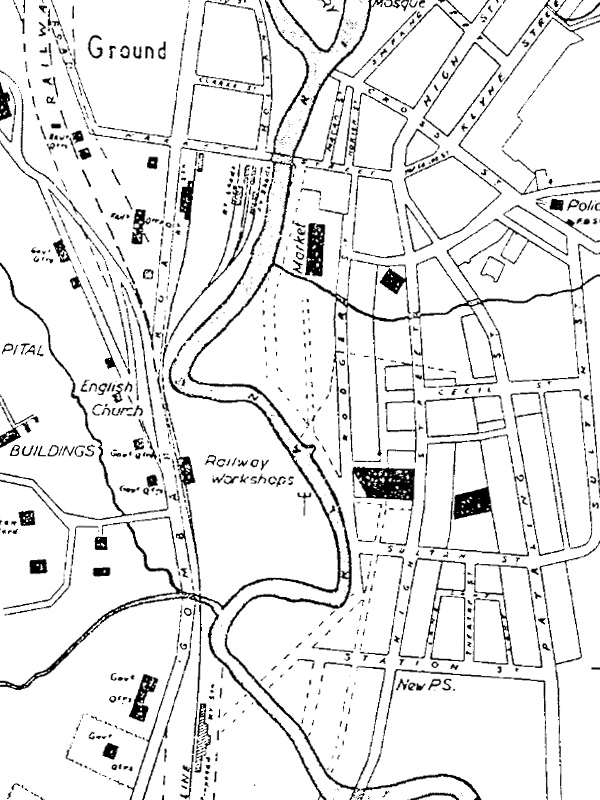
Above: A section of a hand drawn map dated 1889 showing the proposed new station (bottom left) and the proposed alignment for the extension to Batu Junction and Rawang (top left). The blank area of the map where it says "Railway Workshops" is where the first locomotive depot and works was built. It also shows the original layout of the first station and goods yard, and interestingly shows two bows in the river coming up to the railway, the one further north not being shown on later maps. Photographs 1 & 4 were taken from the side of Gombak Road opposite the English Church. The junction for Sultan Street and Pudu branch was near the small river crossing between the Railway Workshops and the proposed new station opposite the government offices. Residency station was near the top left corner of the map off the left hand end of Market Street.
Below: Residency station was built on the line to Batu Junction where it passed through the grounds of the British Residency and was for private use. The curvature of the track suggests this is the view looking southwards with the tunnel behind the photographer. Some maps show the tunnel, some don't, and most show varying alignments for the track. I have found a 1920 map which shows residency station still extant. A 1922 map shows dotted lines, one on the alignment of the old track and one on the alignment of the current track. A 1929 map shows only the new alignment through a tunnel and no stations.
6.1891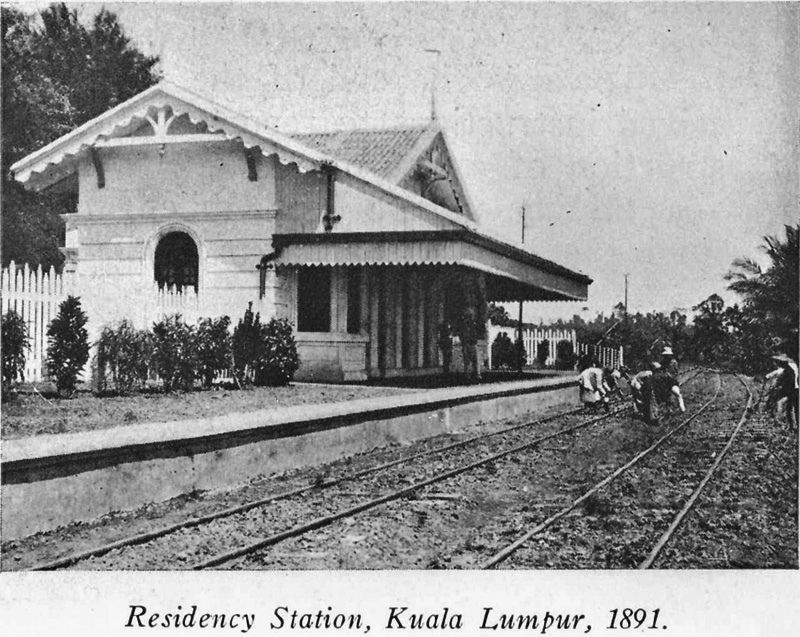
7.1893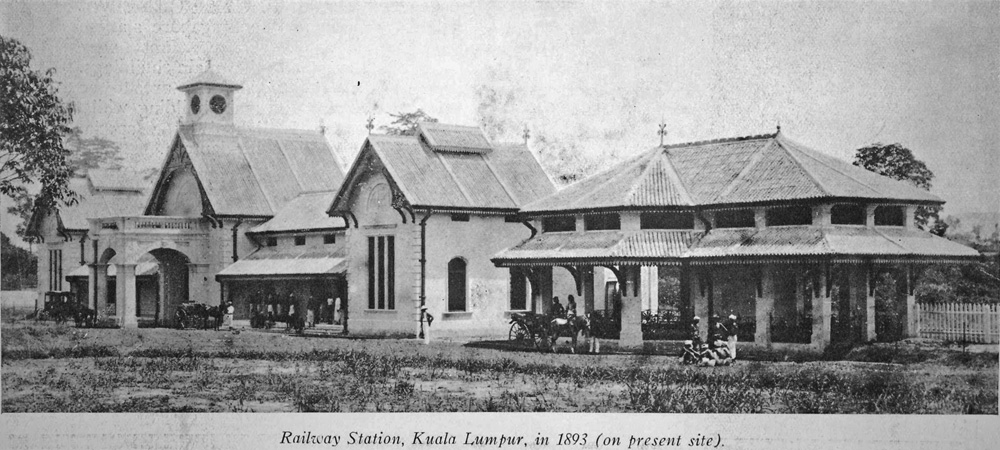
Above & below: Two views of the second Selangor Government Railway station in Kuala Lumpur, 1892-1909. The map above suggests that it was planned to be built on the east side of the line, if that is the case, was it incorporated into the east side of the present Kuala Lumpur (KLO) station and if so is there anything left of it now.
8.1892-1909.jpg)
9.1894 or
later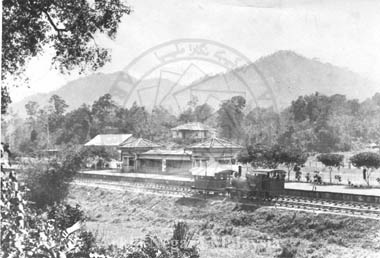
Above: one of the named A class 4-4-0T locomotives with a single 4-wheeled coach at Kuala Kubu station, reached in 1894. This station was some 3 miles south west of the much later (1924) Kuala Kubu Road station, built following a major deviation due to flooding of Kuala Kubu.
23.1895-1917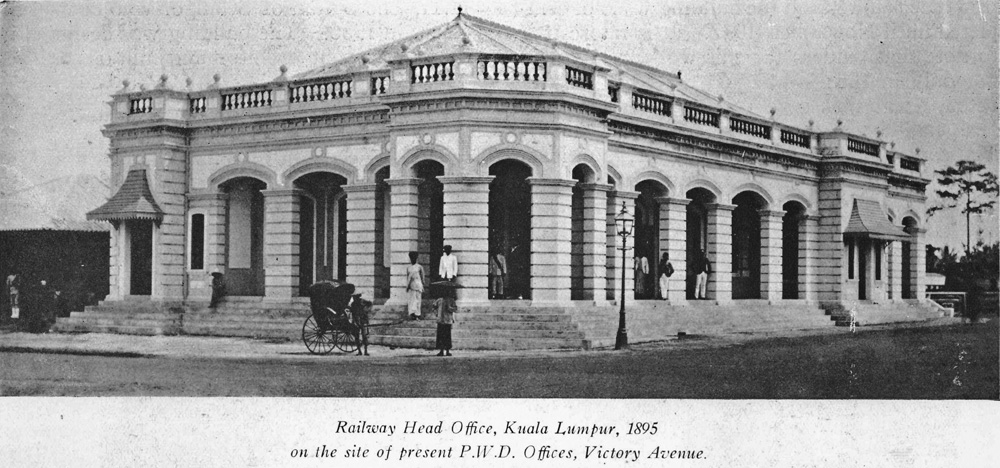
24.1901 or
later.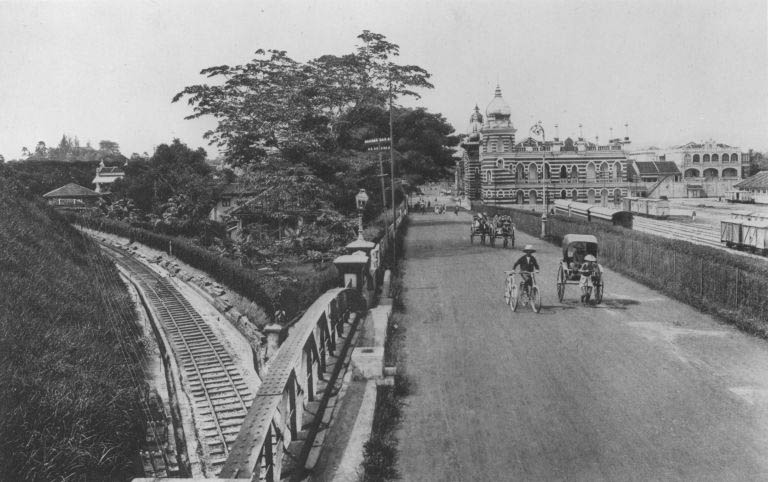
Above: View from Damansara Road bridge looking north. Residency station was on the extreme left of the picture but out of sight in the distance. The coaches in front of the FMSR HQ appear to be of the bogie type introduced from 1901 and the road traffic suggests not too much later but the HQ building already has its second storey and towers. Note the tower behind and left appears to be the one in picture 16.
Below: a view of the goods yard at Kuala Lumpur in later years, bogie coaches were only introduced in 1901, steel covered vans in the 1920s. The original 1886-1892 station was on the left side of the picture. Note the original building of 1895 (Railway Head Office until 1917) has had another storey and some towers added.
10.1921 or
later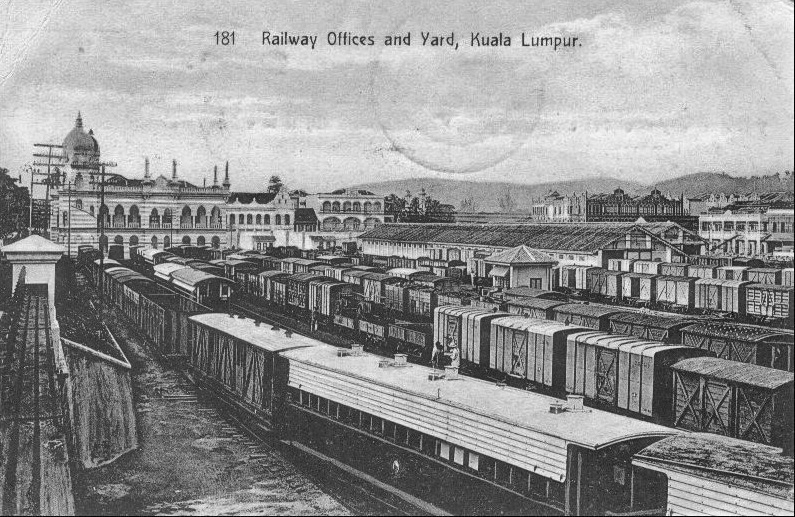
11.1910 or
later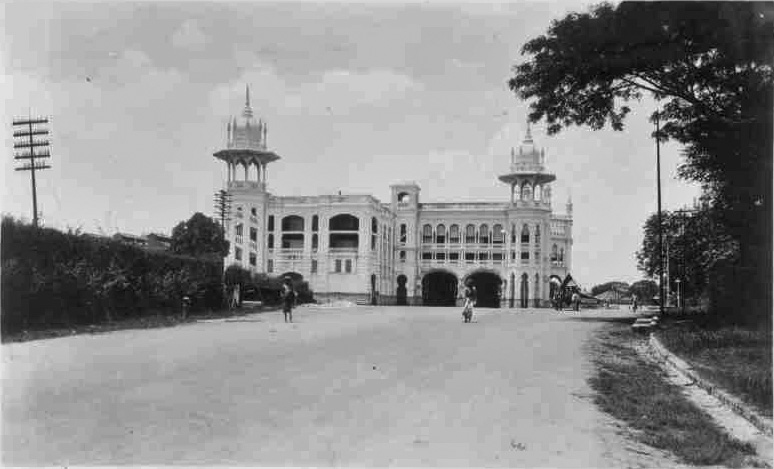
Above: The new 1910 station at Kuala Lumpur as first built before the ornamental archways were built over the tracks.
12.1922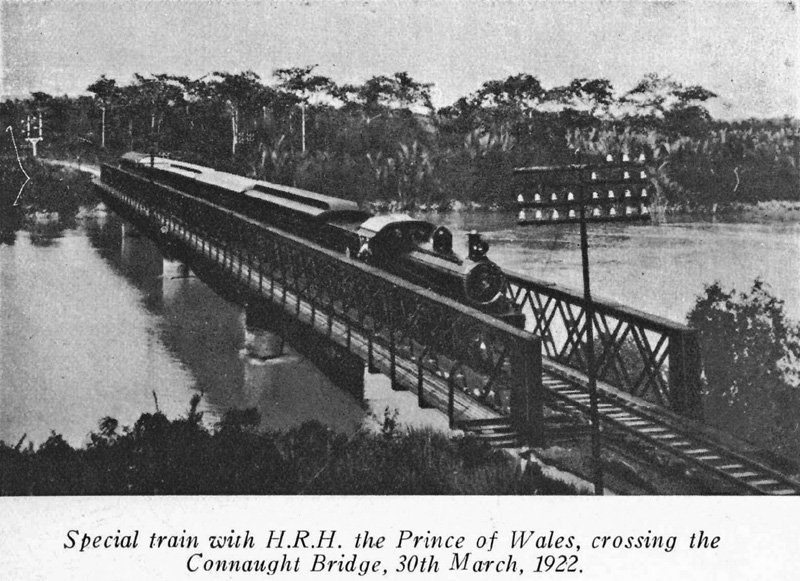
13.1960 or
later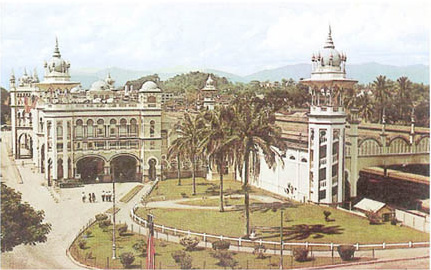
Above: The new (1910) station at Kuala Lumpur from the south end.
Below: a map showing the full extent of the lines in Selangor in 1918. By this time the short link between Kuala Lumpur and Sultan Street had been severed. Passenger services operated between Sultan Street and Ampang whilst all freight was routed via Salak South Junction.
14.1918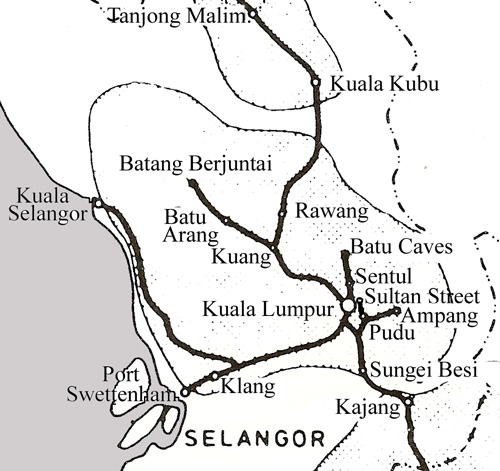
This page created on 27th February 2009.
Updated 9th March 2022.
Construction is ongoing
You are visitor number to this page.